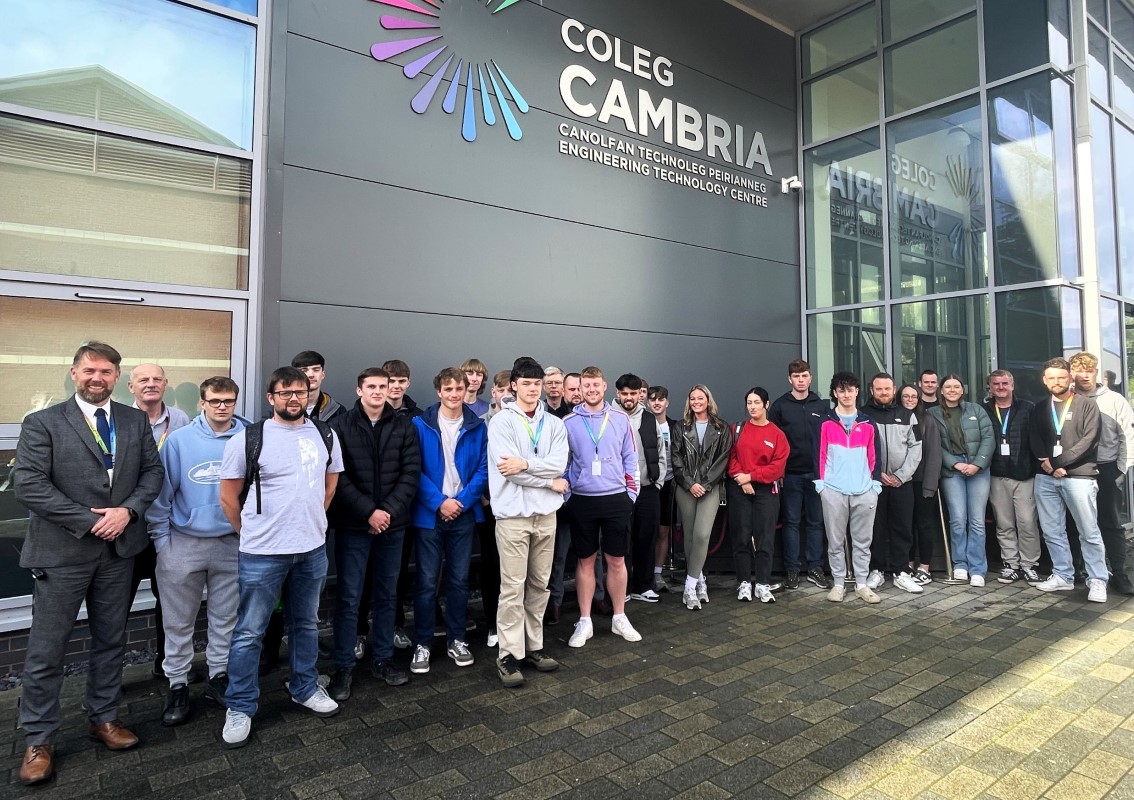Transforming Public Services: The Case for Conversational AI in Employability Programs

In a rapidly evolving world, where technology continues to reshape the landscape of employment, the role of Artificial Intelligence (AI) in employability has emerged as a beacon of innovation. For employability professionals and forward-thinking Innovation Directors, understanding the transformative power of AI is not just a choice but a necessity.
This post delves into AI in employability offering insights into how it shapes the future of workforce development. Brace yourself for a journey through the intersection of technology and employability, as we explore the potential, challenges, and real-world application of AI.
We should look at AI much more as a co-pilot than something that necessarily is going to replace someone’s job. AI is a tool that can help almost everybody do their jobs better, faster, quicker, and that’s how we’re already seeing it being deployed.
~Prime Minister Rishi Sunak (2023)
The Landscape of Outsourced Public Services
In today’s world, many important services offered to citizens are handled not directly by the government but by other private organizations. These are known as outsourced public services. They cover a wide range of things, like healthcare, transportation, and even employment help. The people who provide these services often work closely with the government to make sure everyone gets the help they need.
But sometimes, these services face challenges. One big challenge is making sure they work well for everyone. For example, when it comes to helping people find jobs, it’s not always easy. There are many people looking for jobs, and it can be hard for the services to help everyone in the best way possible.
These challenges can make it tough for the services to reach their full potential. They might not always be as effective as they could be in helping people get the support they need. That’s where new technology, like Artificial Intelligence (AI), comes in.
AI is like a really smart technology that can help these services work better. It can analyze a lot of information quickly and find the best ways to help people. And that’s what we’re going to explore.
Conversational AI in Employability
Conversational AI is a remarkable form of artificial intelligence that enables computers to comprehend, process, and respond in human language. When applied to employability programs, where meaningful conversations play a pivotal role, it becomes a powerful tool for augmenting human interactions. Let’s see how.
In employability, participants engage in numerous conversations with advisers, alongside taking various actions to surmount barriers and transition into the workforce. However, suggesting that participants replace these human conversations with AI is premature, if not impossible. Instead, the key is to leverage technology for its strengths, such as rapid data collection and triaging, while preserving the irreplaceable human touch in support.
By adopting this balanced approach, we achieve a synergy that ensures quicker, high-quality assistance, ultimately expanding our capacity to support more individuals. Conversational AI excels in learning from each interaction, akin to honing a skill through practice. The more people it engages with, the sharper it becomes in delivering precise information and support.
Nevertheless, integrating Conversational AI into outsourced public services is not as easy as placing a chatbot on a website. It demands a nuanced strategy to pinpoint optimal use cases that enhance service quality on a larger scale. This intricate task finds a solution in companies like Earlybird, which specialize in supporting the co-design and deployment of next-generation public service delivery experiences powered by AI. In this collaborative approach, technology augments the human touch, creating an innovative and effective solution for the challenges faced in employability programs.
Earlybird’s Vision and Unique Approach
Earlybird is a UK-based startup using Conversational AI and Voice technology to revolutionize the way people access support and services, especially in critical areas like employability programs. This is their approach to AI in employability, but definitely not the only way.
They are taking the fast-growing trend of AI-powered customer service to outsourced public services. At the heart of this vision is the integration of Conversational AI, as a cutting-edge technology that is flexible, dynamic, and, most importantly, user-centric. They offer a user intelligence solution that captures voice and text interactions with participants to create comprehensive profile reports for advisors, enhancing participant understanding and support.
- Initiation: It all begins with the service provider, the organization dedicated to supporting participants. They design a conversation flow and Earlybird equips them with a secure link to share with participants, the key to unlocking a world of personalized assistance.
- Participant Empowerment: The participants, the individuals seeking support, are given full control over their engagement. They receive the link and decide when to click it. By taking this step, they embark on a journey through the predesigned conversation flow.
- Interactive Engagement: Participants interact with Earlybird using either voice or text, all within the context of their unique situations and requirements. This personalized approach ensures that the support provided is relevant and effective.
- Conversation Synthesis: The software then synthesises these conversations and the insights they yield. Meticulously collecting and processing this data, transforming it into a comprehensive report.
- Empowering Advisers: The invaluable information gathered from these interactions is made accessible to the participants’ advisers. This data equips them with an in-depth understanding of the participants’ progress, needs, and challenges allowing for a more informed and personalized approach to support.
With this flexible and adaptable approach, Earlybird is not limited to a single use case; catering to various needs and stages in employability programs. Some examples include:
- Program Onboarding: Smooth integration of participants into employability programs, ensuring they start on the right foot.
- Progress Check-Ins: Automated Regular check-ins with participants, to track their progress and identify areas where additional support may be needed.
- Destination Tracking: Collect information on where participants are in the job market and their employers.
- Referral Triage: Streamlining the process of identifying people eligible for support and directing them to the right resources.
This vision and unique approach stands as a testament to the strong business case for Conversational AI in Employability Programs. Empowering both service providers and participants, ensuring that the journey towards employment is as smooth and successful as possible.
Advantages of this Approach
This approach to integrating Conversational AI in employability programs has a host of advantages that not only streamline processes but significantly enhance outcomes for employability.
Remote Conversations: One beautiful thing about this approach is the flexibility it offers. Participants can engage in meaningful conversations from their own safe space, eliminating the necessity of visiting an office for every interaction with an adviser. This not only provides convenience but also recognizes the challenges of transport poverty, acknowledging that not having to attend in-person meetings with an adviser can significantly alleviate such concerns.
Enhanced Disclosure: The remote setting fosters a sense of comfort for participants, encouraging more open and candid conversations. The absence of face-to-face awkwardness allows participants to disclose more, particularly through voice interactions. This not only enriches the support experience but also provides advisers with valuable insights, aiding in the development of faster rapport.
Increased Adviser Capacity: By reducing the need for in-person meetings, the approach effectively frees up advisers. This translates into a notable increase in adviser capacity. The result? Happier advisers, lower burnout rates, and improved staff retention — a winning formula for sustained support quality.
Efficient Resource Utilization: With a streamlined approach that minimizes traditional meetings, advisers can dedicate more time to impactful interactions. This not only improves the overall quality of support but also ensures that resources are utilized efficiently.
Improved Outcomes for Providers: Beyond the immediate benefits to participants and advisers, this approach ultimately leads to better outcomes for employability providers. The increased capacity and efficiency translate into more revenue, creating a positive cycle that aligns with the broader goal — getting more people successfully into the workforce.
Navigating Challenges
Implementing any new technology, particularly in the public sector, is not without its hurdles. Recognizing these challenges is the first step toward overcoming them. A strategic and informed approach to technology integration ensures a smoother transition, aligning organizational goals with the transformative potential of technology like Conversational AI.
In the public sector, where the pace of technological adoption might be more gradual, educating stakeholders becomes paramount. Tailored workshops and information sessions can serve as a bridge, enlightening key decision-makers about the benefits and simplicity of integrating AI. This approach demystifies the technology, making it more accessible to those who may be unfamiliar with its potential.
Next, you have to address security concerns which are at the forefront of any technological innovation. Does the solution looking to be implemented prioritize data privacy and security? Especially when handling the personal information of participants in Employability programs. A robust strategy that includes end-to-end encryption measures and adherence to cybersecurity standards is a good way to ensure that organizational assets remain secure throughout the integration process.
Of course, when AI comes into the conversation, there is a question of bias. AI models, when not carefully developed, can inadvertently introduce biases. Mitigating this risk involves testing across diverse scenarios, ensuring inclusivity. By prioritizing fairness and inclusivity, organizations can avoid pitfalls associated with biased AI models, creating an environment where Conversational AI benefits all users equally.
Last but not least, every organization has its unique technological landscape, often with legacy systems in place. Aligning the integration of Conversational AI with existing systems is important. By understanding and addressing these specific organizational needs, integration becomes not just a necessity but an opportunity for enhanced efficiency.
By embracing these challenges as opportunities for growth, organizations can position themselves to unlock the full potential of AI within their unique context.
In conclusion, the potential impact of Conversational AI in employability is nothing short of transformative. However, unlocking its benefits demands a nuanced strategy and expertise. Pioneering companies like Earlybird exemplify the novel approaches that can revolutionize employability programs, showcasing a diverse range of benefits already.
Yet, with new technology comes inevitable challenges. Navigating these hurdles requires a thoughtful and informed approach, ensuring that the integration of AI aligns seamlessly with the goals of employability programs.
If you find yourself on the journey of innovating how your organization delivers support, consider reaching out on LinkedIn.











Responses